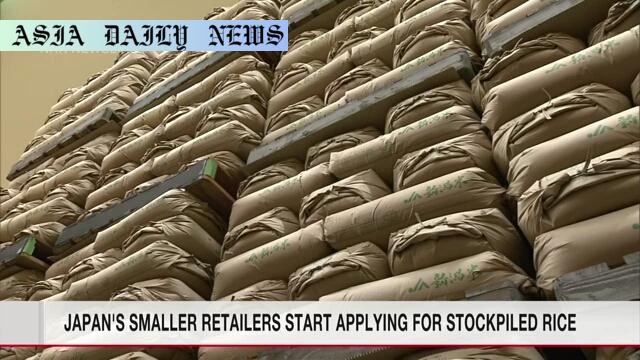Stockpiled rice cuts prices significantly as Japan’s agriculture ministry empowers smaller retailers.

Japan’s Agriculture Ministry Supports Smaller Retailers
In an effort to stabilize the soaring price of rice and aid smaller businesses, Japan’s agriculture ministry has begun distributing stockpiled rice. A significant total of 80,000 tons harvested in 2021 is now available for sale, offering an opportunity to counteract the price hikes to which consumers have been subjected. Of this, 60,000 tons are designated specifically for small- and mid-sized retailers, while the remaining amount is reserved for rice shops equipped with polishing facilities.
This government-led intervention is timely, given that the supermarket price of a five-kilogram bag of rice has surged beyond 4,000 yen. The agriculture ministry intends to sell the stockpiled rice to these smaller players through no-bid contracts, projecting a retail price of approximately 1,800 yen (or 12.50 USD) per five kilograms before tax.
Large Retailers Join the Initiative
Notably, large retail chains such as Aeon and Don Quijote have seized the opportunity. Aeon has acquired 20,000 tons—the largest allocation among retailers—and plans to sell five-kilogram bags to customers for around 2,100 yen, inclusive of tax, starting as early as Sunday or Monday. Meanwhile, Don Quijote aims to launch sales in Tokyo as part of their initial rollout, with an expansion to more stores nationwide expected soon after.
While these larger retailers are receiving significant allocations, ensuring equitable distribution to smaller businesses remains the cornerstone of this initiative. Policies have been carefully calibrated to avoid crowding small retailers out of the market, bolstering their competitive edge against larger chain stores.
Tackling Distribution Challenges
Ensuring that the rice reaches intended markets without logistical bottlenecks remains a priority for the Japanese government. To that end, Transport Minister Nakano Hiromasa has announced the establishment of a dedicated distribution office. This office will focus on ironing out logistical complexities by coordinating efforts between the agriculture ministry and logistics operators. As rice is transported across regions, policymakers seek to prevent delays and shortages that would counteract the benefits of the initiative.
By instituting these measures, the government has shown a commitment not just to affordability but to maintaining efficiency in supply chains, ensuring that this critical commodity is accessible to all segments of the population.
A Response to Market Needs
This development comes amidst growing concern over the cost of living in Japan, with staples such as rice becoming increasingly unaffordable for many households. By setting prices considerably lower than market rates, this initiative addresses a pressing need while also paving the way for sustained consumer support of small- and mid-sized retailers.
Through proactive interventions and policy measures, Japan’s government demonstrates resourcefulness and responsiveness to market demands. Consumers, particularly those hardest hit by inflation, stand to benefit significantly from such efforts, which also promise to redefine retail dynamics for staple goods.
Commentary
The Importance of Government Interventions in Food Security
Japan’s decision to sell stockpiled rice to retailers highlights the vital role government interventions can play in addressing food security issues. Rising food prices, driven by inflation and other market variables, have become a global concern, particularly for staple items like rice that are central to daily diets. By releasing stockpiled supplies, the government not only provides immediate relief but also assures citizens of their commitment to economic stability and social welfare.
Supporting Small Businesses Amid Economic Strain
One of the most remarkable aspects of Japan’s initiative is its focus on empowering small and mid-sized retailers. Amidst the dominance of large retail chains, smaller businesses often struggle to compete due to resource limitations and higher operating costs. This move not only levels the playing field to some extent but also strengthens the local economies in which these smaller retailers operate. It’s a model that other countries could consider adopting to stimulate grassroots economic development.
Consumer Benefits and Beyond
From the perspective of consumers, this initiative is undeniably encouraging. With food prices rising globally, many households are tightening budgets and worrying about affording their next grocery purchase. The reduced cost of rice made available through this program offers tangible savings and immediate relief. Additionally, consumers benefit from enhanced access to rice through a variety of retail channels—from small stores to major chains.
Overall, Japan’s stockpiled rice initiative exemplifies how strategic policymaking can have far-reaching social, economic, and market impacts. It not only reduces financial stresses but also fortifies the broader retail framework, addressing both immediate concerns and long-term economic viability.


